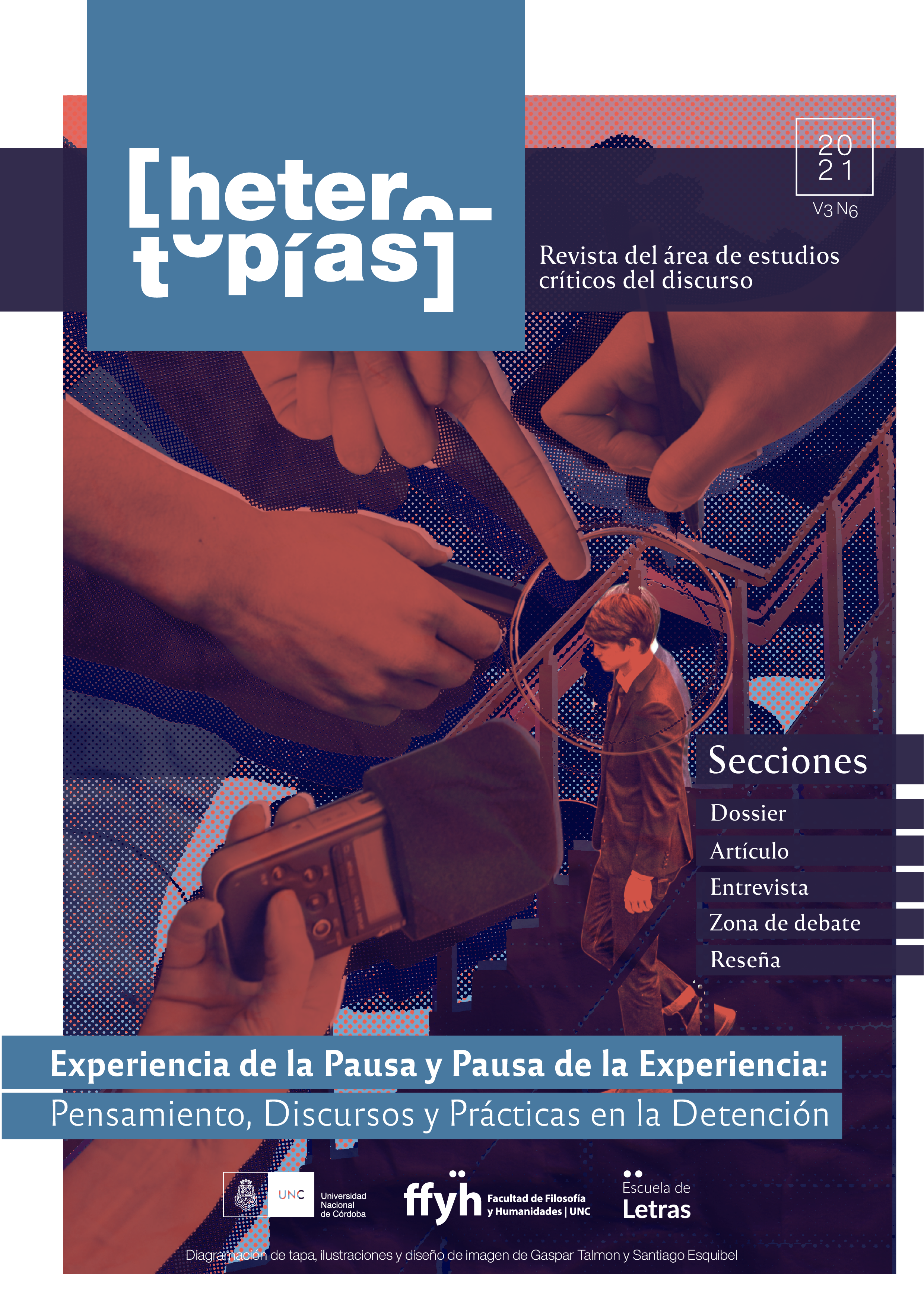Spatial distance and practice of the encounter. A conversation around the hiatus in performing arts
Main Article Content
Abstract
Where does the specificity of the performing arts lie? In the unattainable of the event, in the co-presence of bodies? Without denying the enormous permeability that exists today between different artistic languages -and theater is not an exception-, the sanitary measures that are being applied, in some way, gives prominence to the question of specificity. Since March, in Argentina, theatrical performances have been on hiatus for both spectators and practitioners, because the scene is emotional contagion, it is proximity, it is reunion. What does this stop mean? Is the very existence of the theater at risk? Does the pause enable some other form of the performing arts or it means its dissolution? While we are awaiting a return to the known state of affairs, we may find ourselves in a position to configure a welcome to the unknown. In this work, spectator and performer exchange and go over questions about what performing arts is rehearsing and imagining, but also about what they are not doing and about the power that could reside there.
Downloads
Article Details

This work is licensed under a Creative Commons Attribution-NonCommercial-ShareAlike 4.0 International License.
Those authors who have publications with this journal, accept the following terms: Those authors who have publications with this journal, accept the following terms:
a. The authors will keep their copyright and guarantee to the journal the right of first publication of their work, which will be simultaneously subject to the Creative Commons Attribution - Non-Commercial - Share Alike (by-nc-sa) Attribution License; no commercial use of the original work or any derivative works is allowed, the distribution of which must be done with a license equal to the one that regulates the original work.
b. Authors may adopt other non-exclusive license agreements for the distribution of the published version of the work (e.g., deposit it in an institutional telematic archive or publish it in a monographic volume) provided that the initial publication in this journal is indicated.
c. Authors are allowed and recommended to disseminate their work through the Internet (e.g. in institutional telematic archives or on their website) before and during the submission process, which may lead to interesting exchanges and increase the number of citations of the published work. (See The effect of open access).
References
Agamben, G. (2014). Sobre lo que podemos no hacer. En Desnudez (pp. 63-65). Buenos Aires: Adriana Hidalgo.
Andruetto, M. T. (2018). Merodeos en torno al silencio. Conferencia para la Jornada del Centro de Difusión e Investigación de Literatura Infantil y Juvenil “La seducción del silencio. Escenas para la lectura”. Córdoba: CEDILIJ. Recuperado de http://cedilijargentina.blogspot.com/p/investigaciones-on-line.html
Badiou, A. (2009). Tesis sobre el teatro. En Pequeño manual de inestética (pp. 121-126). Buenos Aires: Prometeo.
Cormann, E. (2007). Especificidad, potencialidad, actualidad de la asamblea teatral. En S. Blanco, et al.,Escribir para el teatro (pp. 23-38). Alicante: XV Muestra de Teatro Español de Autores Contemporáneos, Colección Laboratorio Teatral 2.
Cornago, O. (2004). La teatralidad como crítica de la Modernidad. Tropelías. Revista de Teoría de la Literatura y Literatura Comparada, 15-17(6), 242-265. Recuperado de https://papiro.unizar.es/ojs/index.php/tropelias/article/view/8/492.
Domin, H. (1986). ¿Para qué la lírica hoy? Barcelona: Editorial Alfa.
Dubatti, J. (2007). Filosofía del teatro I. Convivio, experiencia, subjetividad. Buenos Aires: Atuel.
Dubatti, J. (2020). Experiencia teatral, experiencia tecnovivial: ni identidad, ni campeonato, ni superación evolucionista, ni destrucción, ni vínculos simétricos. Revista Rebento, 1 (12), 8-32. Recuperado de http://www.periodicos.ia.unesp.br/index.php/rebento/article/view/503/299.
Garramuño, F. (2016). Arte inespecífico y mundos en común. En P. Corroy C. Robles (Eds.),Estética, medios masivos y subjetividades (pp. 15-29). Santiago de Chile: Pontificia Universidad Católica de Chile. Recuperado de http://estetica.uc.cl/noticias/329-libro-estetica-medios-masivos-y-subjetividades.
Lang, S. (2019). Manifiesto de la práctica escénica. En B. Hang y A. Muñoz (Comps.) (2019). El tiempo es lo único que tenemos (pp. 113-122). Buenos Aires: Caja Negra.
Nancy, J-L. (2007). Tumba de sueño. Buenos Aires: Amorrortu.
Pelbart, P. P. (2009). Cómo vivir solos. En Filosofía de la deserción: nihilismo, locura y comunidad (pp. 43-50). Buenos Aires: Tinta Limón.
